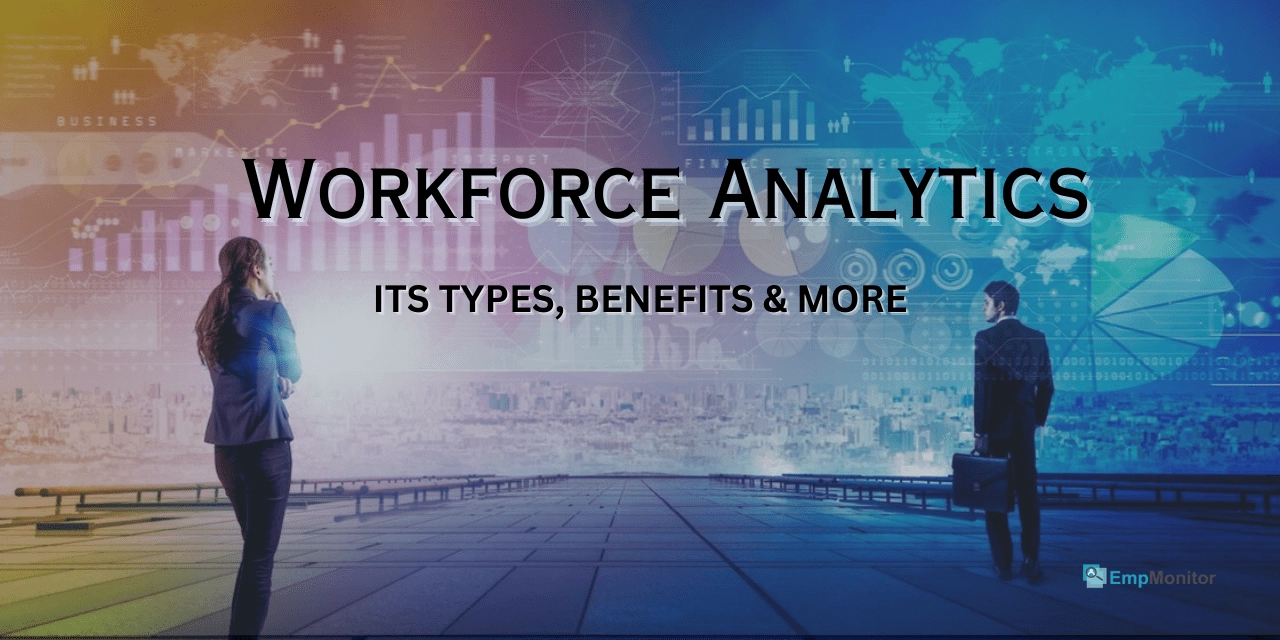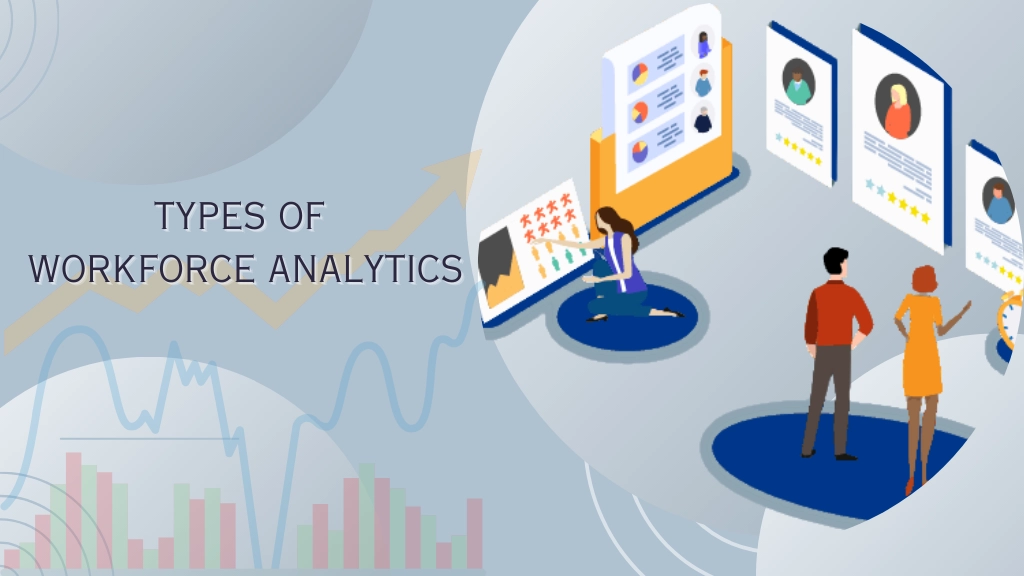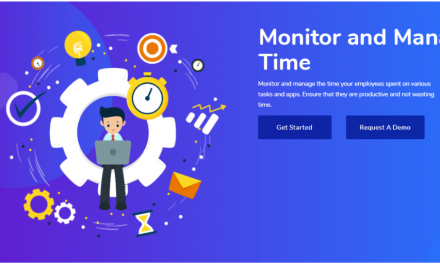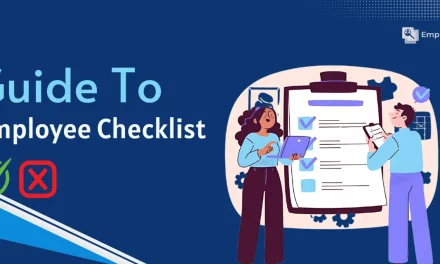In today’s rapidly evolving business landscape, data has become a powerful tool for organizations seeking to gain a competitive edge. Analytics, the art of harnessing data-driven insights to enhance workforce operation, is at the forefront of this transformation.
Before moving ahead, let us first understand what workforce analytics means.
It is a technique to analyze and evaluate the actions and behavior of employees to enhance workforce administration performance. It is accomplishable by measuring data from individuals, Managers, and HRs with statistical methods and software designed to enhance the productivity of employees.
Hit ‘Play’ Button & Tune Into The Blog!
Need For Workforce Analytics
The primary goal of workforce analytics is to aid in macro-level planning in an organization. Analytics is necessary because it helps organizations maximize their internal activities. These analytics help companies identify various weaknesses within their internal process. It also allows the companies to enhance productivity and decrease the turnover rate.
Workforce management evaluation awards the organization knowledge about the forthcoming jobs and provides information about the firm’s expenses and budgets. It also helps the company recognize various components that aid the company in enhancing its productivity rates.
Organizations can utilize analytics to explore teams and employees with elevated potential, and the company can grant those experts career growth opportunities. It can also access the company altering their scheme to encourage employee retention, engagement, and wellbeing.
Types Of Workforce Analytics
Workforce Analytics encompasses various types of evaluation which aims at understanding and optimizing different aspects of an organization’s workforce. Here are some common types:
Descriptive Analytics
Descriptive Analytics provides the company with information about the present and previous events.
It is based on the assessment of the historical and existing company data to pinpoint budding trends and relationships with the demographics.
Predictive Analytics
Predictive Analytics is one of the vital types of analytics.
It helps in the prediction of future outcomes and profit based on the evaluation of the present and historical data. It uses demographic techniques like data mining and machine learning.
This type of analytics is utilized by various businesses to upgrade employee experience and optimize their productivity process.
An example of predictive workforce analytics can be seen in the retail industry. A retail company might use predictive analytics to forecast customer demand for specific products, and the insights gained contribute to workforce intelligence, helping optimize staffing levels and workforce planning.
By analyzing historical sales data, market trends, seasonality, and various other factors, the company can predict which products are likely to be popular in the coming months.
This allows them to optimize inventory management, adjust pricing strategies, and ensure they have the right products in stock to meet customer demand, ultimately improving sales and customer satisfaction while reducing excess inventory costs.
Perspective Analytics
It is another type of analytics that uses historical data to perform forecasts.
The key difference between predictive and prescriptive analytics is that prescriptive analytics plans the best approach based on the conducted predictive analytics to make projections.
In simple words, this provides suggestions based on the forecast and has been perceived as the future step to reduce challenges and address workforce issues. The main objective of this analysis is to make sure that you meet your required goals.
Diagnostic analytics
Diagnostic Analytics is a technique for evaluating the causes of your workforce’s remissness or success.
It is vital for businesses as it provides clarity of workforce trends.
In addition, it also aids in proper strategizing and streamlines the efforts to minimize the problem. This type of analysis helps in leveraging the information and optimizes your business growth.
Implementation of Workforce Analytics
We have now discussed the meaning, necessity, and types of workforce analytics. Now is the time to look how to implement workforce analytics and planning in a transparent way!
While talking about its execution, you can categorize them into two major groups. They are:
- Must include
- Good to include
Must-include: These are the aspects where taking the help of analytics will add a better way of streamlining the management and it’s a long and tiring process at times. HRs, Managers, and team leaders should include workforce productivity in below-mentioned aspects:
Recruitment: The tools and software help you scan public resumes automatically, shortlist potential candidates, perform background and social media checks, and decrease recruitment costs.
Cost Management: Cost Management is a vital aspect of an organization. It helps the managers streamline the allocation of resources and reduce unnecessary costs.
Decision Making: It helps the team leaders make informed decisions by providing reports and necessary insights into the workforce.
Risk Mitigation: The analytical software and tools help you identify and address potential risks such as skill gaps, turnovers, etc.
Good to include: Good to incorporate are the secondary segments. Following are the sections where including analytics will boost the overall growth
Employee Engagement: With the help of software and tools, you can analyze data and enhance the engagement and satisfaction of employees. It aids in increasing productivity.
Succession Planning: The analytics of the employees helps you in pinpointing the workforce planning tips and next team leader within the organization.
Compliance: It assists you in ensuring that your company complies with labor laws and regulations.
Retention: Retention helps the team leaders identify the behavioral pattern that shows early symptoms of potential resignation, unacknowledged over-performing employees, and their productivity.
Workforce Analytics benefits in corporations
As discussed earlier, analytics plays a vital role in firms. It helps managers and HRs to spot the weaknesses of the employees and bridge the open linkings. The benefits of workforce analytics are mentioned below:
- Identifies efficient recruitment strategies.
- Anticipates the need for current and future technologies.
- Observes the areas where labor costs can be reduced.
- Assists the enterprises in identifying, encouraging, and preparing its future managers.
- Enhances the overall business performance.
- Decreases the retention rate by recognizing turnover triggers, like lack of training, promotions, and more.
Managers may consider utilizing software solution such as EmpMonitor to effectively achieve and optimize the aforementioned advantages. An employee management software offers a diverse array of features to facilitate this process.
Let’s know how it can streamline your organization’s workflow!
EmpMonitor- The Workforce Management Solution
EmpMonitor is a comprehensive workforce administration solution that helps organizations monitor employee productivity, track time and attendance,and enhance cyber security.
The tool offers employers a feature-rich, cloud-based employee tracking software with real-time insights.
Real-Time Insights: EmpMonitor’s real-time insight characteristics offer data so that the managers can:
- Identify high and low-performing employee
- Build the strategies efficiently
Project & Task Management: The software provides thorough clarity of the projects, which is appropriate for managers to:
- Measure their work progress
- Observe the project deadlines
- Manage multiple projects at a time
User Tracking: Employers can track their team members with the help of EmpMonitor’s user tracking feature, which:
- Observe team behavior and work swatch
- Gives real-time employee insights
- Retrieve web browsing history
Employee Monitoring: The tool also provides enhanced employee monitoring features to employers that boost team productivity. It helps you in:
- Streamline scattered workforce
- Observe team productivity
- Strengthen productivity at work.
Attendance Management: With the help of a cloud-based analytics software, you can observe employee attendance with :
- Employee Shift scheduling
- Their clock-in and clock-out times
- Easy to obtain dashboard
- Automated timesheets
In addition to this, EmpMonitor also offers you features like:
- Internal threat detection
- Security
- USB Detection
- Keystroke
- Screenshots
Hence, EmpMonitor is one such software for all HR-related queries. It helps businesses boost efficiency, manage remote teams, and ensure compliance with intuitive features and customizable reports. Thus, it is a valuable tool for enhancing workforce productivity and optimizing internal processes.
Also Read
7 Unique Ways To Build A Future-Ready Workforce
05 Best Strategies For Implementing Successful Workforce Planning
How To Determine Which Workforce Management Software Is Best For Your Business?
Upcoming Workforce Analytics Trends In 2024
According to a study, it is found that 75%-80% of organizations plan to implement trends in their business strategies. They are dynamic, and they are one of the easiest ways to keep yourself updated with the world. It provides the flexibility of bringing variations to your business.
In addition to this, 45% of the HRs have started executing trends and workforce planning tips in their business plans.
Following are some of the upcoming emerging trends in business in 2024:
- Usage of Natural language processing
- Integration of AI and Machine Learning
- Social Media Insights for Branding
- DEI Technique
Usage of Natural Language Processing: NLP is an artificial intelligence (AI) technology that legalizes machines to understand, analyze and generate human language.
It is a new development in the trends. It can be utilized to study employee feedback from diverse sources to pinpoint the trends and necessary insights to assist organizations in improving their decision-making process.
Integration of AI and Machine Learning: The usage of AI and Machine Learning is one of the vital developments in trends of analytics.
You can utilize AI and Machine learning systems to analyze and scan applicant resumes, spot diverse patterns in employee conductance, and forecast potential resignations.
Social Media Insights For Branding: Social Media is one of the most increasingly used networks nowadays.
The benefits of using it for branding and analyzing the potential trends, target audience, and audience preferences can add a privilege to your branding and recruitment campaigns.
DEI Technique: The DEI Technique refers to Diversity, Equity and Inclusion. This technique is used by firms to identify the diverse trends from different platforms and to track and advance DEI efforts.
A diverse workforce helps enhance team spirit and elevate the productivity rate from the bottom. Additionally, it also establishes even-handedness and depiction within the organization.
Conclusion:
Businesses now have ample information. The large sample of data becomes difficult to analyze, this is where workforce analytics comes to the rescue. It is an indispensable tool for modern organizations. By harnessing the power of data and technology. It enables companies to make informed decisions, improve HR processes, enhance employee engagement, and plan the future strategically.














